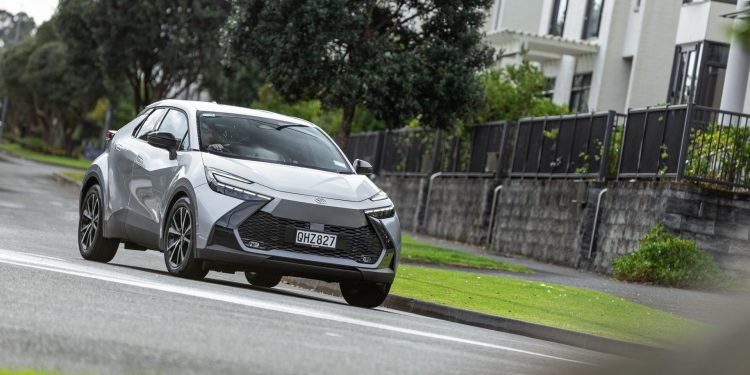2024 Toyota C-HR GXL Hybrid review
Words: Kyle Cassidy | Photos: Isaac Western
Toyota’s funky little C-HR enters its second generation. It continues with its stand-out styling and brings updated hybrid tech. Is it worthy of consideration amongst the hoards of compact SUVs?
Toyota’s new C-HR drops into the most crowded of market segments here in NZ; there are just so many compact SUVs to choose from. C-HR even jostles for position within Toyota’s bulging SUV range.
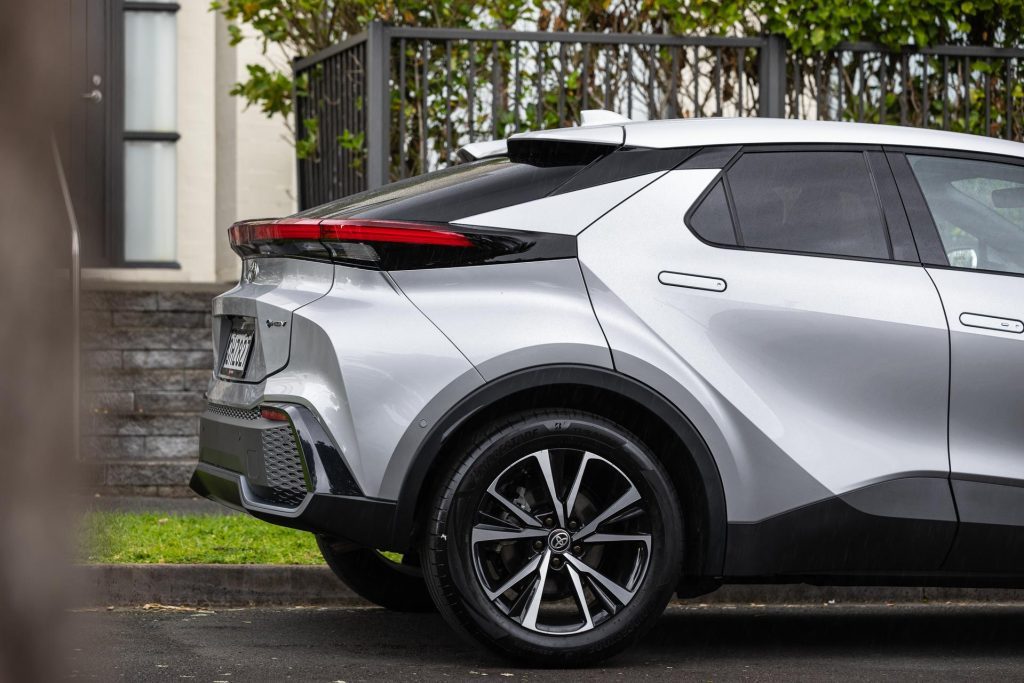
With the entry level GX at $45,990, C-HR pick ups where the Yaris Cross range signs off, while the top model is $57k.
Yet, customers could opt for a Corolla Cross with its pricing set between $34k and $55k. C-HR also swims into RAV4 territory which starts at $49k with a couple of models below $57k. Talk about choice.
So why would someone choose C-HR? Well, probably because they like the look and are after something compact. Its low fuel consumption is a plus too.
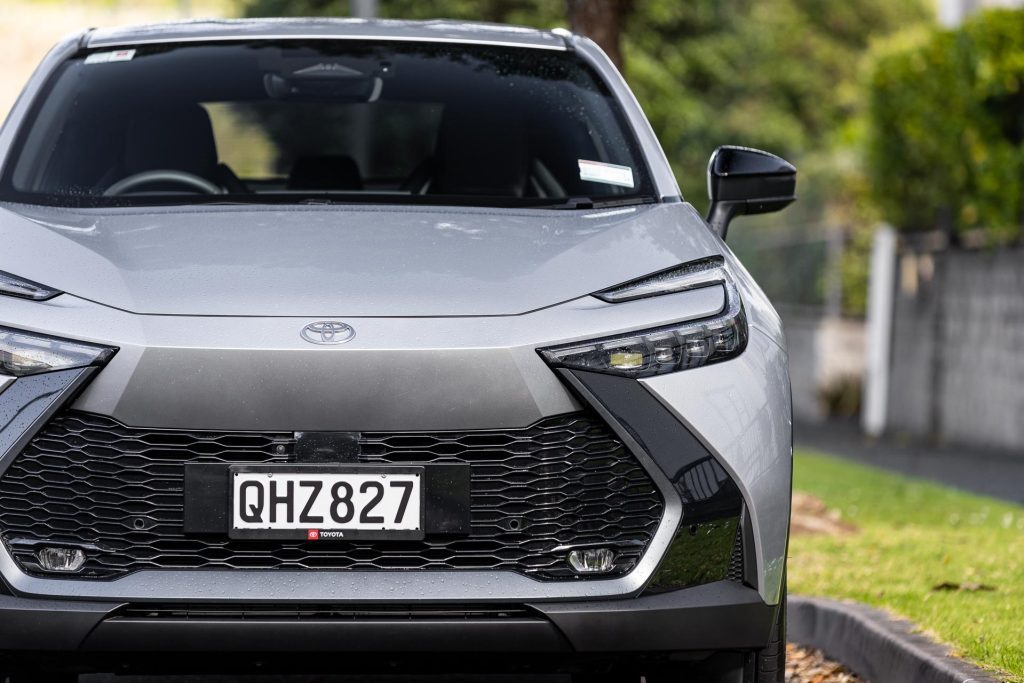
As the tagline says, ‘small footprint, big impression’. Previously, you could say Toyota’s design ethos was rather conservative, boring even.
But that’s no longer the case. And the first C-HR was amongst the first to break the mould with its edgy look.
This new one carries on those bold traditions with a modern looking front while a smoothing of the lines makes it look more dynamic.
It might not float your boat but it is interesting and rather striking with its two-tone paint scheme which is available on the higher grade models.
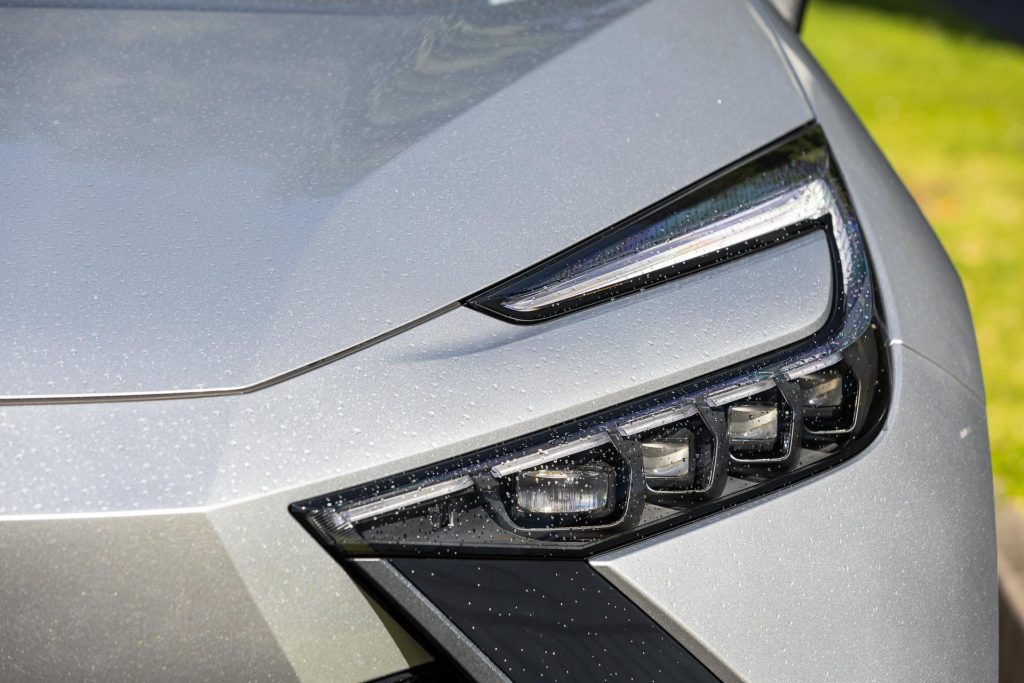
An all hybrid line-up
There are four models, the aforementioned GX kicking things off, while we have the mid-spec $49,990 GXL here (all on-roads included, no haggling).
This you’ll find to be well outfitted; there’s voice recognition, audio streaming, wireless Apple CarPlay and Android Auto and sat nav all controlled via the 12.3-inch touchscreen.
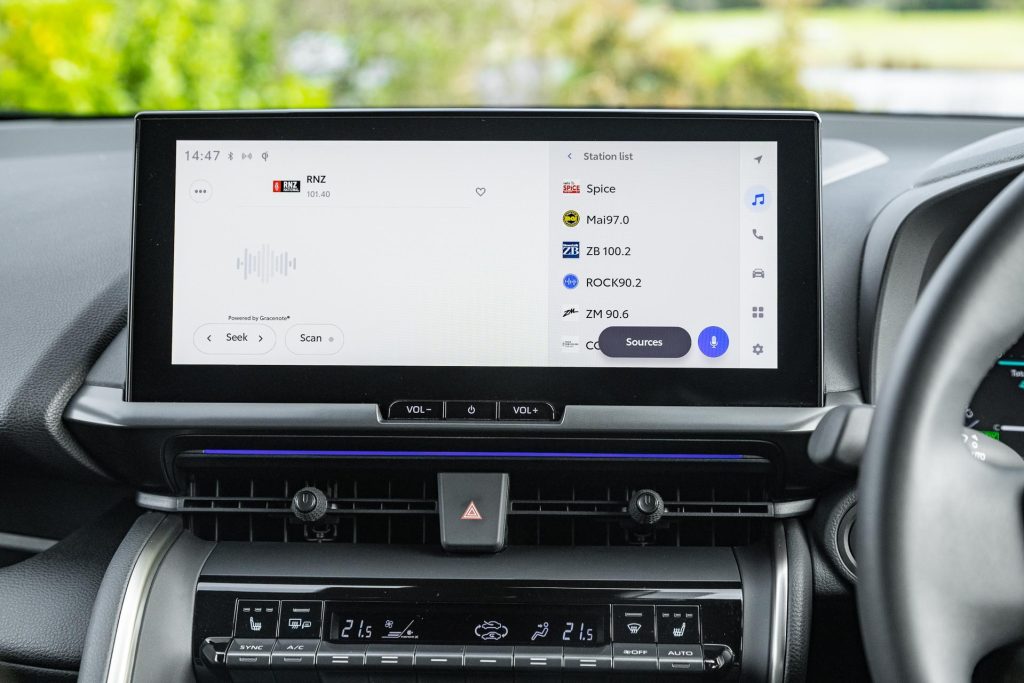
It has a five-star safety rating thanks to all the usual assistance features and eight airbags. Privacy glass, a powered tailgate, 18-inch wheels and LED headlights make the grade too.
The Limited is $52,990 adding extras like a JBL audio system, a heated steering wheel, head-up display, leather seats and a panoramic roof.
And interestingly, at the top is the GR Sport with an all-wheel drive powertrain and more power, kicking off at $56k.
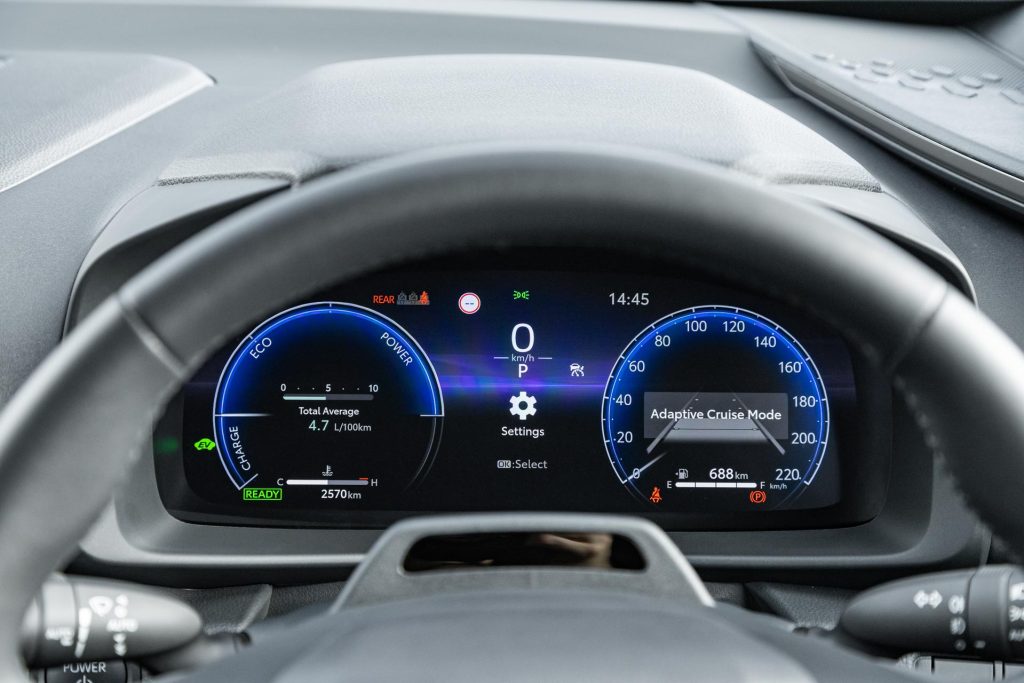
The others use a 1.8-litre petrol four matched to the fifth-gen hybrid system, with a total output of 103kW. A front driver, the C-HR has a stated fuel consumption of 4.4L/100km, with CO2 of 98g/km.
The all-wheel drive GR sports a big-bore 2.0-litre engine with a system total of 145kW, while fuel consumption is just 0.1 worse off.
Stylish but compact
Inside, there’s a cosy but classy cabin. The seat is set high and so too the centre console, giving the driving position a cockpit-like feel.
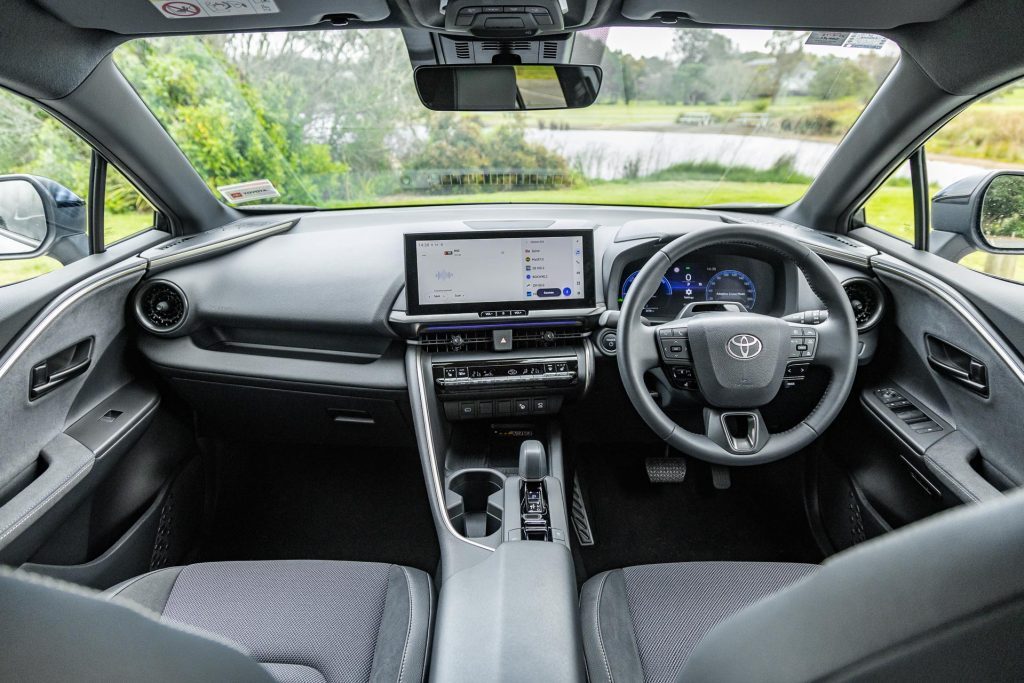
This GXL has the digital driver’s display, with a few different ways to display the info. All of which is presented clearly, the power gauge letting you know if you’re driving economically and what the hybrid system is up to.
There is a quick acting and vibrant touch screen whose operations won’t confuse. The voice control is pretty smart too, though has limited functionality.
The physical buttons for the ventilation make warming the cabin easier. Seat heaters also get their own switch. It’s all so straightforward.
Yet another easy-to-reach button brings up the surround-view camera, while another summons the self-parking function. However, with its small dimensions and a good turn around, this isn’t hard to park.
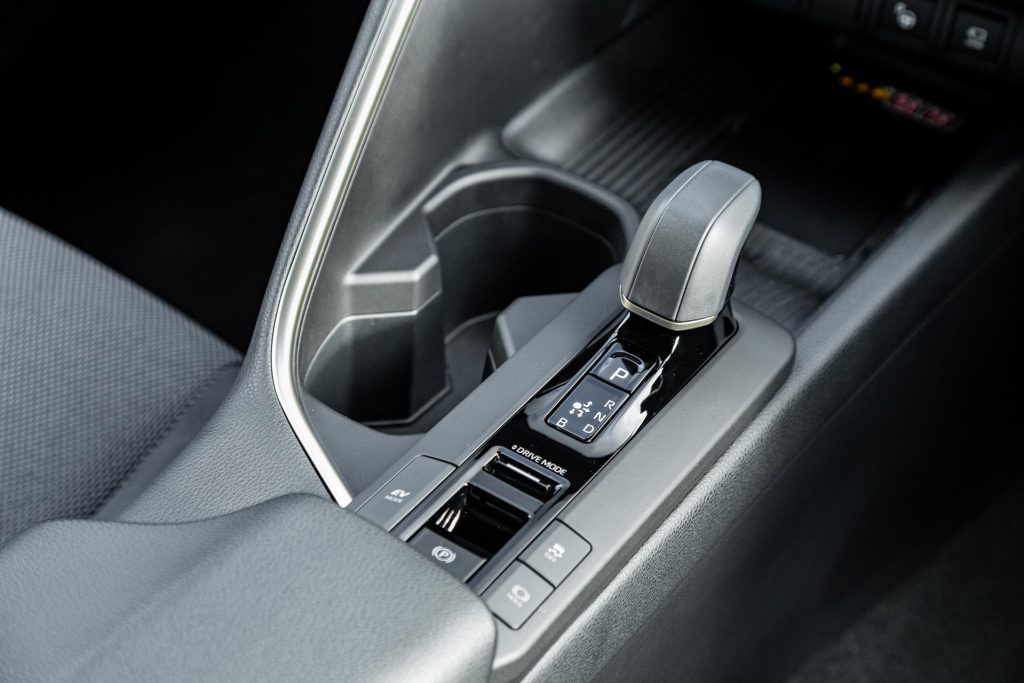
You’ll also find a well situated charge pad. The cup holders are a little small, so too the centre bin. And while the centre console sits up high, there’s no storage beneath.
Like the exterior, the cabin has some styling panache, particularly the curvy dashboard. Topping off a satisfying interior, most of the surfaces are nicely lined with a mix of suede and fake leather.
However, this made the mis-aligned stitching of the leather-wrapped wheel particularly grating. While the seats look sporty, they aren’t too stiff in the bolsters, offering good support and electric adjustment, at least on the driver’s side.
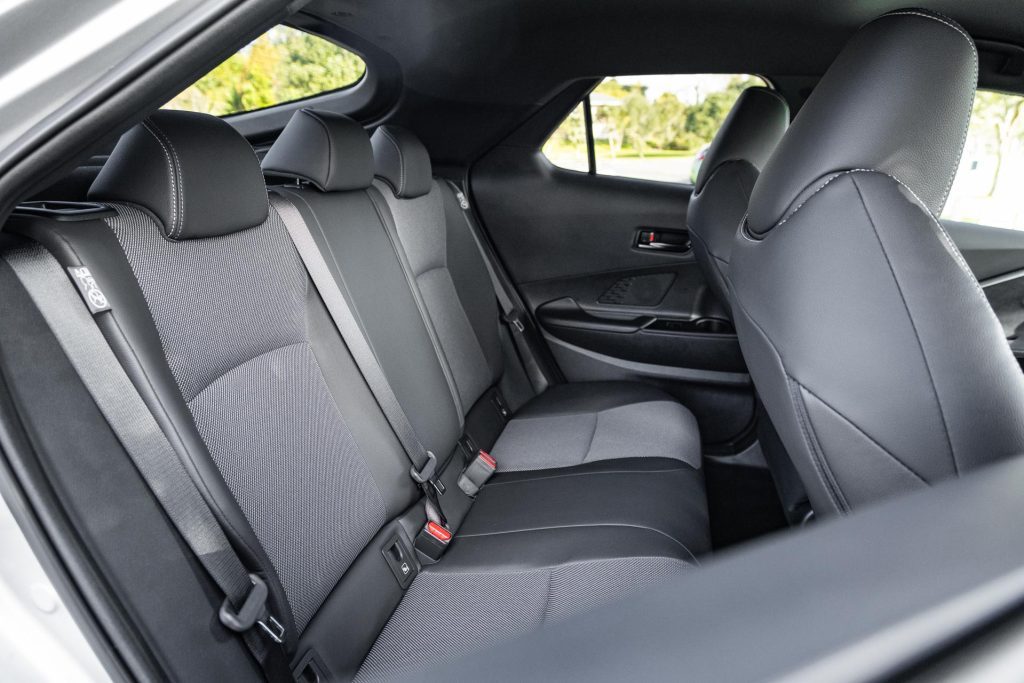
While the entry to the rear is a little tight, there is just enough room back there for three kids across.
Adults don’t get a whole heap of legroom however, and it’s all rather dark in the back, the side window being quite small, the C-pillar rather chunky.
The swoopy rear end means boot space isn’t huge. There’s a quoted 356L, the space saver spare underneath taking up some of the available depth.
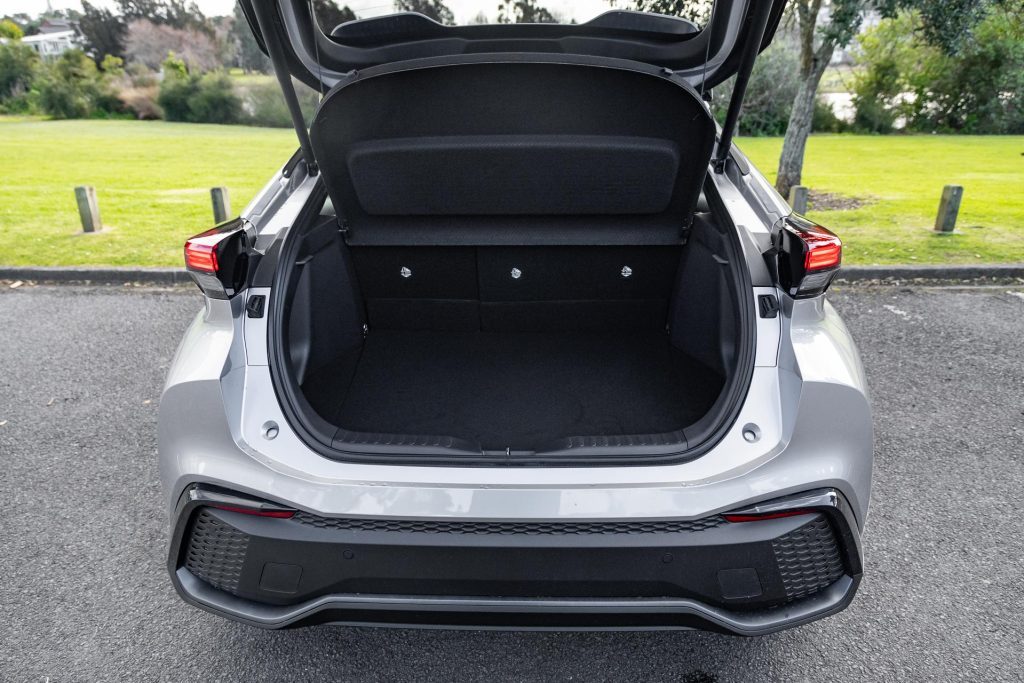
It looks wide enough for at least one golf bag. To fit your playing partner’s set, you’ll need to fold the rear seats down. This is easily done however, and it presents a flat load space.
Economy the key
The C-HR uses the fifth generation of Toyota’s hybrid synergy drive. It’s more efficient, more powerful, smaller and lighter.
With a lithium-ion battery under the back seat, it’s also capable of all-electric running, situation dependent, and the distance it can ‘EV’ is vastly improved over previous models.
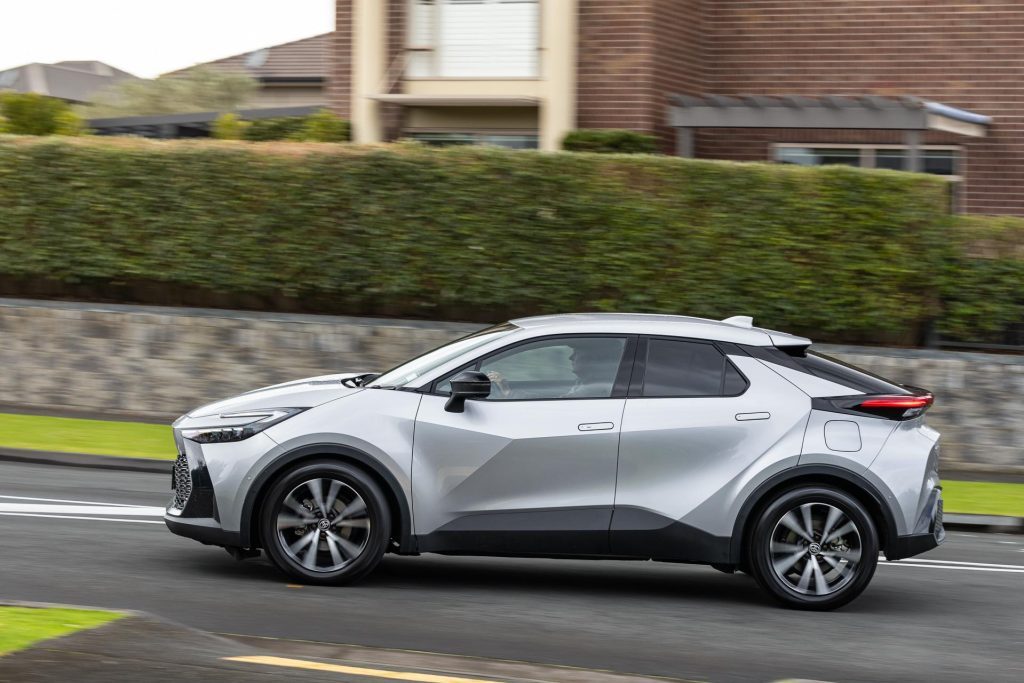
Toyota’s hybrid system is a refined powertrain, the motor and engine power blended more smoothly than other petrol electric drivetrains available.
It uses both ICE and volts to get you up and going, but once at speed, lift off the gas and you’ll be surprised at how well the EV mode will maintain your cruising speed.
If you are forever stuck in slow-moving traffic, the engine will rarely fire. Unless you have the heater up high, that is.
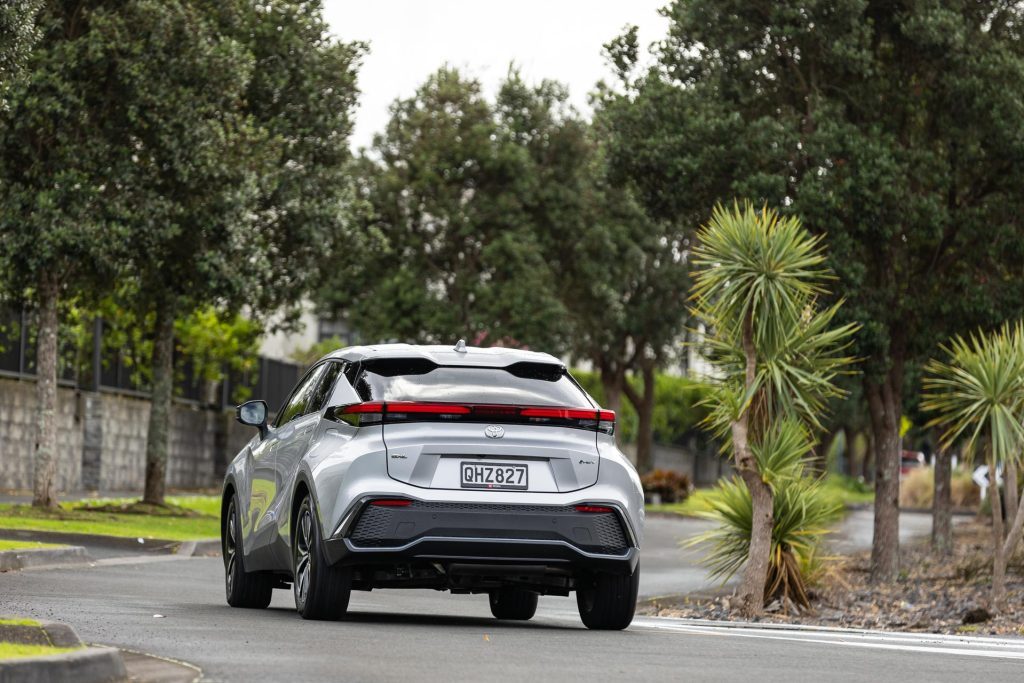
As to consumption, you shouldn’t have too hard a time getting it near the claim; we registered 4.6L/100km without any tricks or resorting to the Eco mode.
With easy steering, a supple ride and good all round vision, this is user friendly. The gear selector operation might seem weird at first, but the trans quickly sorts itself from reverse into drive when manoeuvring.
And when you are busy spinning it around, the auto braking function will ram the anchors on if the sensors think you’re getting too close to an object; sometimes this annoys but it might also save you from a boo boo when you’re rushing.
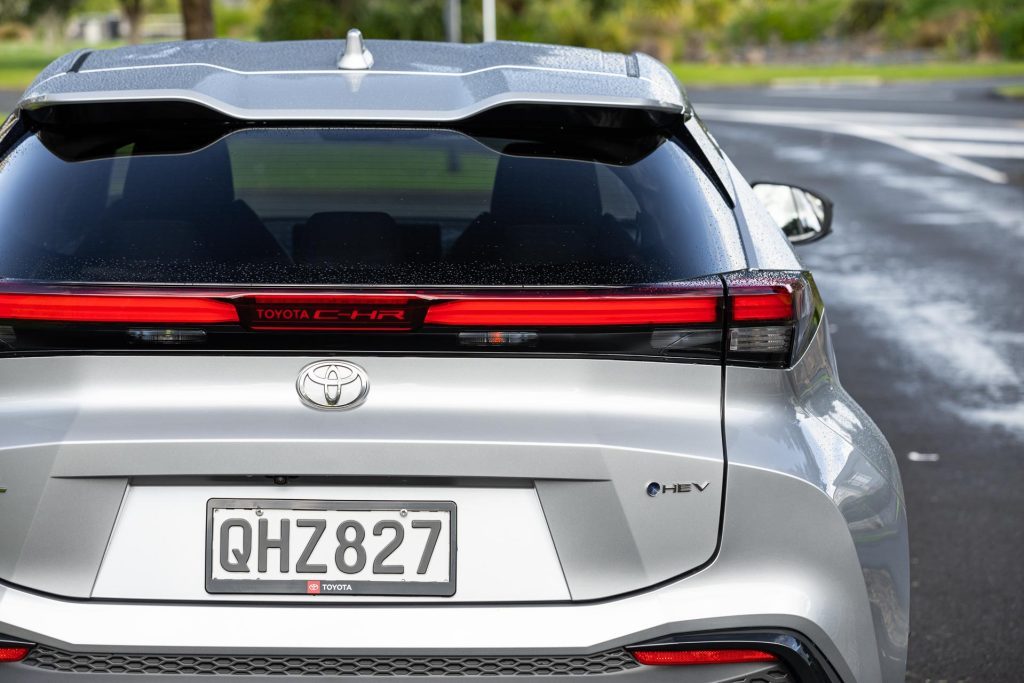
The adaptive cruise control functions without a hitch, and the lane keeping isn’t too bad either. There is a driver monitor that issues a discreet alert should you look away from the road for too long, though it’s not overly persistent.
The speed recognition system won’t bother you much either if you find yourself above the limit, issuing only minor visual alerts rather than the dreaded bongs.
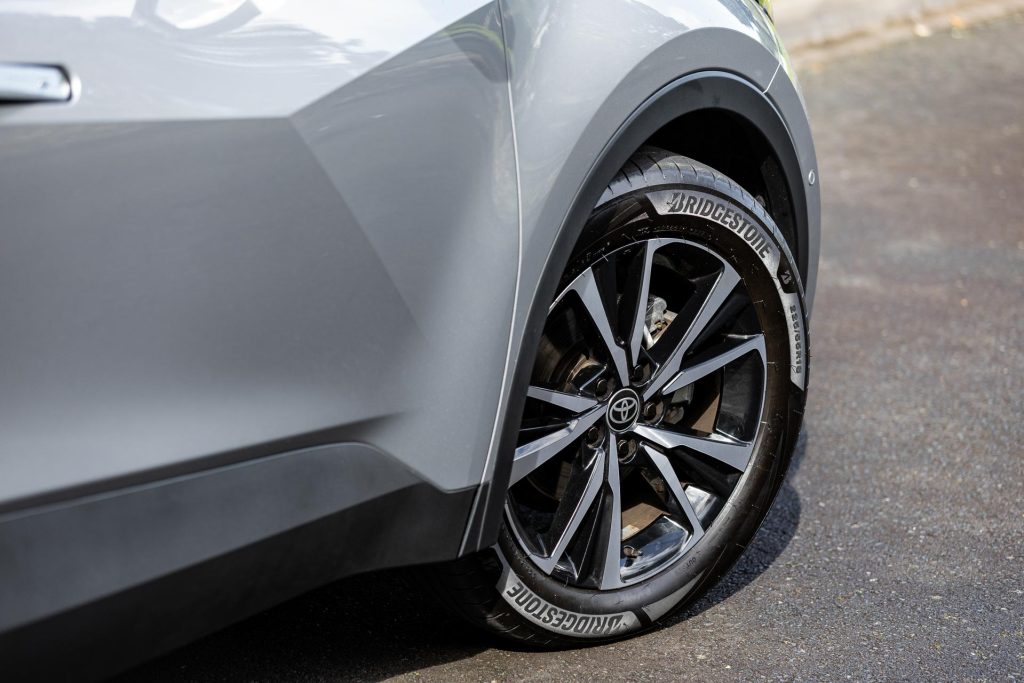
Town and country
C-HR does its best work in town, but still goes okay on the highway. It’s not a rocket ship, taking the best part of 10 seconds to reach the legal limit.
The overtake isn’t quick either, so best pick your moments there. Clicking into Sport mode won’t add any real haste, but the powertrain will feel more responsive while the steering gets a helping of added resistance when you’re in the bends.
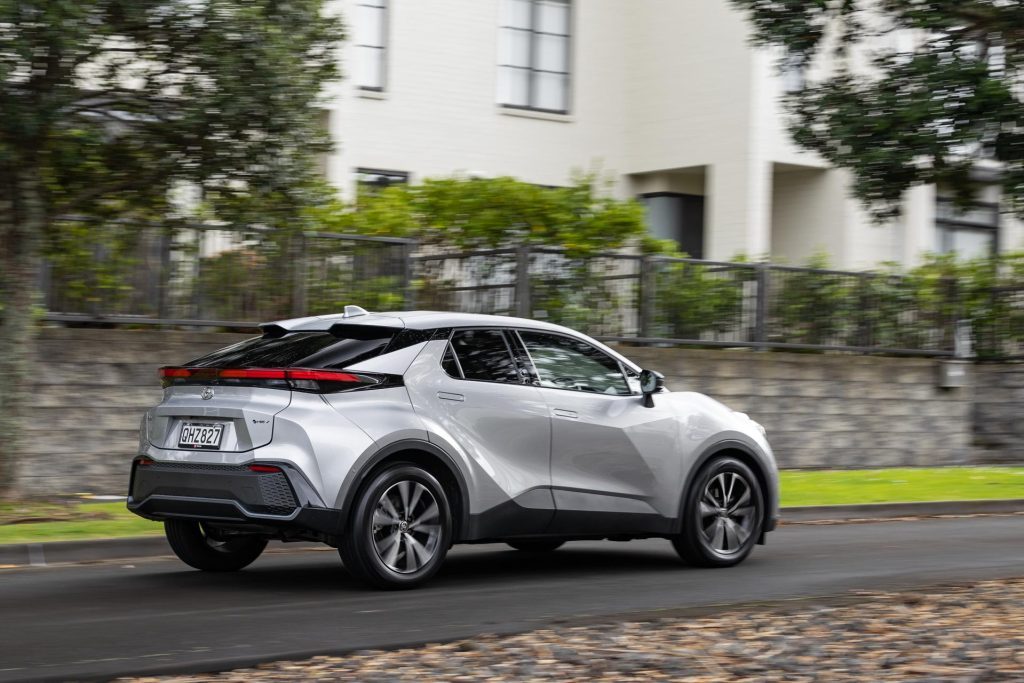
Out here, the suspension tuning favours ride; C-HR is good at mopping up the bumps. This leads to a slight propensity to roll into the curves, yet it manages a neutral balance.
It’s only if you go a bit crazy that it starts surrendering to understeer. At a more sedate pace it rides well, though highway road noise starts to rise on coarse chip surfaces and there’s a bit of wind noise if it’s blowing.
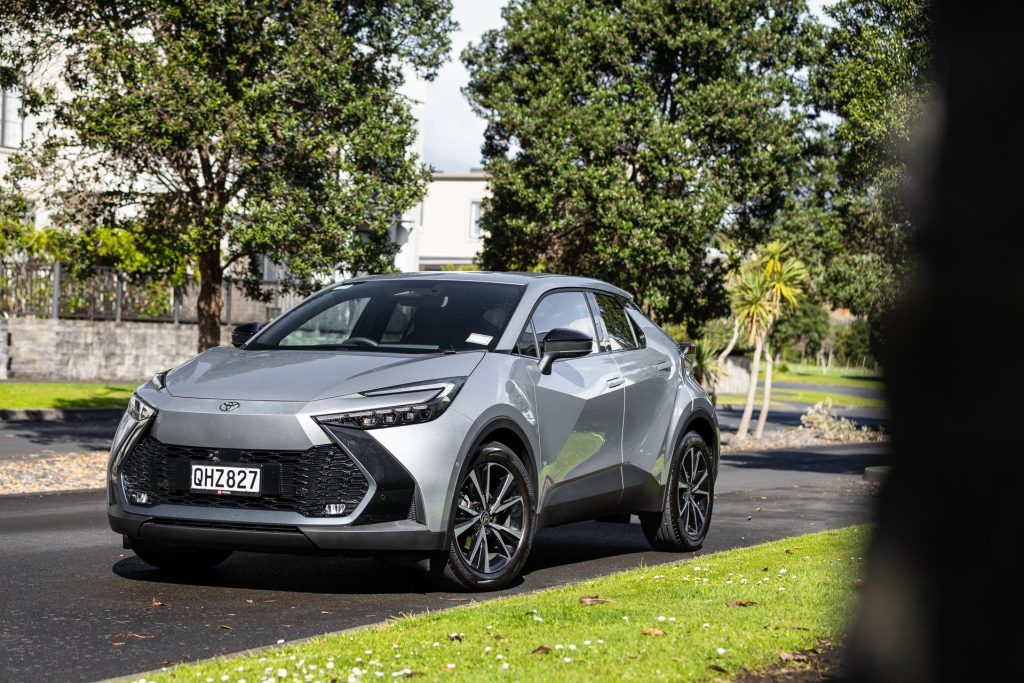
What else is there?
As we said, there are plenty to choose from but in the hybrid space there’s the Haval Jolion which is significantly cheaper and well specified but the powertrain isn’t a match for the Toyota’s, neither on refinement or economy.
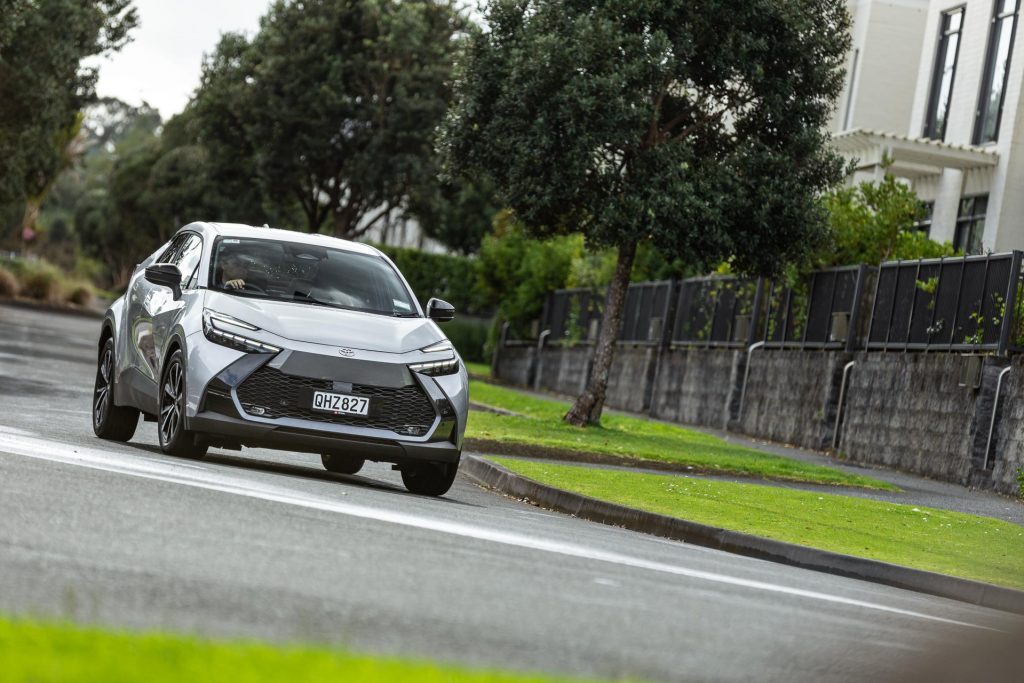
And it has its annoying safety beepers. There is the new Honda HR-V too, which has just arrived at sub $50k pricing.
Expect a report next month. For a sportier drive, try the Ford Puma ST (a mild hybrid but still a frugal runner) or for something a bit bigger with similarly out-there styling, there’s the Kona hybrid.
| Model | Toyota C-HR GXL Hybrid |
| Price | $49,990 |
| Engine | 1798cc, IL4, EFI |
| Power | 72kW @ 5200rpm |
| Torque | 142Nm @ 3600rpm |
| Hybrid System Output | 103kW |
| Drivetrain | e-CVT, FWD |
| Turning circle | 10.3m (2.7 turns) |
| Fuel Use | 4.4L/100km |
| C02 Output | 98g/km |
| 0-100km/h | 10.21 sec |
| Tyre Size | f/r-225/55/R18 |
| Fuel Capacity | 43L |
| Stability systems | ABS, ESP, TV |
| Safety | AEB, ACC, BSM, LDW, RCTA, ALK, AHB |
| Luggage Capacity | 356L |
| Tow rating | 725kg |
| Service intervals | 12 months/15,000km |
| Warranty | 3 years/100,000km |
| ANCAP rating | 5 Stars (2024) |
| Weight | 1490kg (claimed) |
This article first appeared in the September 2024 issue of NZ Autocar Magazine.


